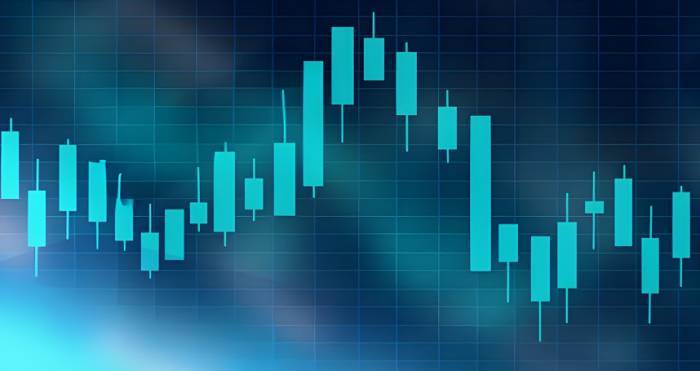New Opportunities Emerging from the AI Boom
Recently, there has been a noticeable resurgence in the artificial intelligence (AI) sector, particularly evident in the Chinese A-share market. Investors observed a considerable uptick in the prices of AI-related stocks, with notable leaders like Cambricon Technologies witnessing an impressive rise exceeding 8% at one point, reaching an all-time high. Similarly, Kingsoft Office also marked a significant climb, breaking through the 310 yuan barrier. This surge is not merely coincidental; it reflects a growing global enthusiasm for AI technology as it permeates various industries.
The rapid adoption of AI has transformed it into a focal point for both market observation and financial capital. While the Chinese market showcases a blossoming ecosystem around AI, the effects are felt globally. The recent release of significant policies and data from the United States has catalyzed fresh discussions about the trajectory of AI technology, igniting a dialogue that resonates across international borders. The present scenario indicates that the rise of AI is not just a natural evolution of technology but a phenomenon strongly fueled by capital markets. Companies in China, such as Cambricon and Kingsoft, are poised to seize this critical opportunity amid the ongoing AI frenzy.
On the American side of the equation, AI-related companies are embodying similar vigor. The performance of Nvidia stands out prominently following its latest quarterly financial report, featuring breathtaking breakthroughs in AI chip production. The figures from Nvidia's third quarter show remarkable growth, with revenues hitting 35 billion USD—an astonishing 94% increase year-over-year. This uptick is largely driven by soaring demand from data centers and AI chip sectors, illustrating a re-evaluation of AI technology's market prospects by investors. This phenomenon has ignited a ripple effect, leading to a global investment surge in AI technologies.
However, the prevailing enthusiasm for AI technology has prompted caution among experts who alert investors to potential risks lurking behind this bullish sentiment. The European Central Bank has issued warnings regarding the existence of a bubble within AI-related stocks, suggesting that the rapidly escalating valuations could lead to unrealistic expectations. Should future technological applications not meet the preceding optimism or market demand begin to wane, several AI firms might find themselves under considerable financial strain.

The AI movement is further understated by national strategic implications, especially in the United States. An assertive message has been conveyed through various channels indicating that AI will constitute the heart of future technological competition. The proposal of the "AI Superhuman Plan" by U.S. congressional committees mirrors the historical ambition of the Manhattan Project, positioning it as a large-scale initiative intended to foster technological innovation.
This resurgence of grand scientific endeavors in the AI domain underscores America's commitment to achieving breakthroughs not only in technology but also through supportive policies and financial investments. Such strategies aim to maintain supremacy in the fierce global tech competition that lies ahead.
Despite the wide potential application of AI technology, the swift influx of capital has consistently inflated market expectations within this field. The warning from the European Central Bank highlights that overly optimistic market sentiments could culminate in a bubble, especially as certain leading companies dominate the landscape. Such concentration potentially brings about higher volatility risks, as an overemphasis on a select few could distort the reality of the broader market.
In scenarios where investor enthusiasm overshadows realistic assessments, notable dangers arise. The current AI industry is still in a nascent phase of rapid growth, where technological advancements and business models remain under exploration. Therefore, an excess of excitement might not precisely correlate with the actual development pace within the sector. Should corporate earnings projections fall short of expectations, drastic price adjustments might lead to rapid capital withdrawal, potentially triggering severe market turbulence.
As such, it becomes imperative for investors engaging with AI-related stocks to remain composed, carefully evaluating both the technological capabilities of companies and their market feasible potential. Avoiding blind speculation is essential to mitigate the risk of encountering an investment bubble in the short term. Concurrently, regulatory bodies should enhance their policy guidance and risk management within the AI sector to promote the healthy progression of the market.
The swift advances in AI technology have fueled an escalated competitive landscape in global technology. From the inception of the "AI Superhuman Plan" in the U.S. to China's supportive policies in the AI realm, nations are collectively amplifying their investments in this cutting-edge technology. This competition extends beyond the corporate arena, intertwining with broader national strategic initiatives.
Moving forward, the future of the global economy hinges on which entities can successfully capitalize on AI R&D and application. The party that establishes an advantageous position in this technological race will likely emerge at the forefront of future international competition. The ongoing AI-centric technological revolution promises not only to reshape the global economic landscape but also to determine who holds the reins of tech leadership in the years to come. The ability to identify opportunities within this competitive landscape stands as a critical undertaking for businesses and investors across the globe.
Leave A Comment